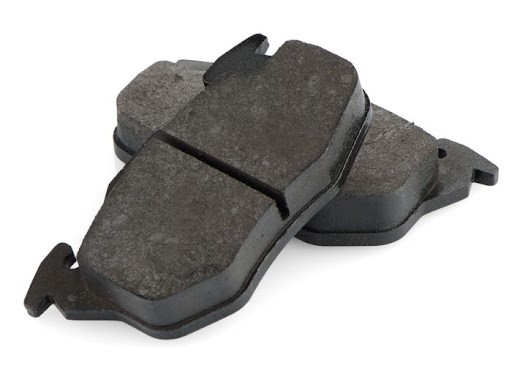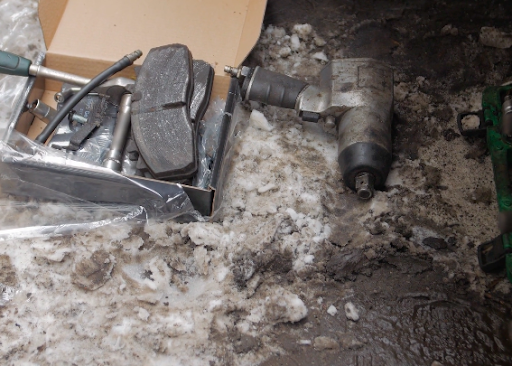There are a wide variety of brake pads available on the market, and the best brake pads to buy for you will depend on your individual preferences.

Some factors to consider when choosing brake pads to buy include:
- The type of vehicle you drive
- Your driving habits
- The conditions in which you typically drive
- Your budget
If you are unsure which brake pads to buy and what are right for you, consult with a qualified mechanic or automotive specialist. They will be able to help you choose the best brake pads based on your specific needs and preferences.
The Science Behind Brake Pads
When you step on the brakes in your car, truck, or SUV, it’s the brake pads that do the heavy lifting. These important safety components are what create the friction that slows down and stops your vehicle.
Brake pads are made up of a variety of materials, but most commonly they contain steel wool, asbestos, copper, or Kevlar. The steel wool is used for its abrasive qualities, while the asbestos provides durability and heat-resistance. Copper is included for its conductive properties, which help dissipate heat away from the brake pads. And finally, Kevlar is used to add strength and stability to the brake pads to buy.
When you press down on the brake pedal, the pads are forced against the rotors (the large metal discs that your vehicle’s wheels are mounted on). This contact creates friction, which in turn slows down the rotation of the wheels and ultimately brings your car to a stop.
The amount of friction generated by the brake pads is determined by their composition. For example, pads that contain more steel wool will create more friction than those with less. However, too much steel wool can cause the pads to wear down quickly, so a balance must be struck.
The same is true of the other materials used in brake pads. Too much asbestos can make the pads too brittle, while too much copper can make them too soft. The ideal mix of materials will depend on the make and model of your vehicle, as well as your driving habits.
If you tend to drive aggressively or frequently haul heavy loads, you may need brake pads that are designed for more demanding use. On the other hand, if you typically drive gently and don’t put a lot of stress on your brakes, you can probably get by with less rugged pads.
The type of terrain you drive on can also affect the wear and tear on your brake pads. If you live in an area with a lot of hills, for example, you may go through brake pads more quickly than someone who lives in a flat region.
At the end of the day, it’s important to choose the right brake pads for your vehicle and driving habits. Doing so will help you keep your car running safely and smoothly for many miles to come.
How Do You Know if Your Brake Pads Are Worn Out?
The easiest way to tell if your brake pads are worn out is to look at them. Most brake pads have a wear indicator, which is a small metal tab embedded in the pad material.
When the pad wears down to the point where the metal tab is exposed, it’s time to replace the pads. You can also check the thickness of the pad material with a micrometer. Most brake pads are between 4 and 6 millimeters thick when new. When they wear down to 2 millimeters thick, they need to be replaced.
You can listen for a squealing noise when you brake. This is caused by the wear indicator tab rubbing against the brake rotor, and it’s an indication that the pads need to be replaced.
Why Should You Replace Old Brake Pads
There are many reasons to replace old brake pads, even if they seem to be working fine. Brake pads wear down over time and eventually need to be replaced in order to ensure optimal performance from your brakes.

Replacing old brake pads can help improve your fuel efficiency and extend the life of your brakes. Ultimately, it is important to replace old brake pads to keep you and your family safe on the road.
Some issues that can arise from not replacing old brake pads include:
- Reduced braking power – as brake pads wear down, they become less effective at stopping your car. This can be extremely dangerous, especially if you are driving at high speeds or in hazardous conditions.
- Increased fuel consumption – old, worn-out brake pads can cause your car to work harder and use more fuel.
- Damaged brake rotors – if you do not replace your brake pads in a timely manner, the metal backing plate can damage your brake rotors. This will cause even further problems with your brakes and will be much more expensive to fix than simply replacing the brake pads.
- Decreased lifespan of your brakes – if you do not take care of your brakes by replacing old pads, you will likely have to replace your entire brake system much sooner than necessary. This can be a very costly repair.
It is important to keep an eye on your brake pads and replace them when they start to wear down. Most mechanics recommend replacing brake pads every 30,000 miles or so to be safe. However, this number can vary depending on your driving habits and the type of brake pads you have.
Be sure to consult with your mechanic to get an accurate estimate for how often you should replace your brake pads.
Replacing old brake pads is a relatively simple and inexpensive repair that can save you a lot of money and hassle in the long run. Don’t wait until it’s too late.










